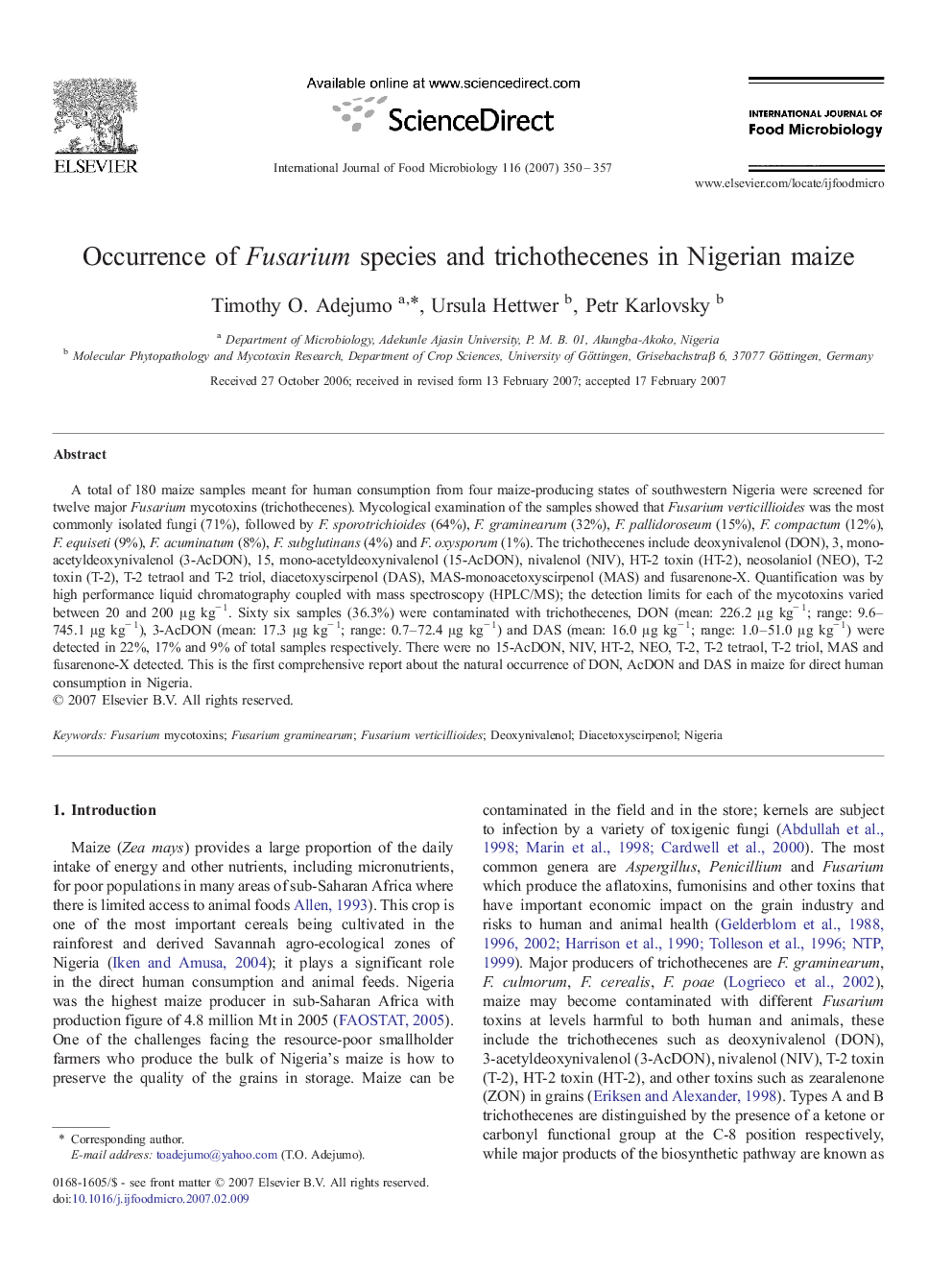| Article ID | Journal | Published Year | Pages | File Type |
|---|---|---|---|---|
| 4369981 | International Journal of Food Microbiology | 2007 | 8 Pages |
A total of 180 maize samples meant for human consumption from four maize-producing states of southwestern Nigeria were screened for twelve major Fusarium mycotoxins (trichothecenes). Mycological examination of the samples showed that Fusarium verticillioides was the most commonly isolated fungi (71%), followed by F. sporotrichioides (64%), F. graminearum (32%), F. pallidoroseum (15%), F. compactum (12%), F. equiseti (9%), F. acuminatum (8%), F. subglutinans (4%) and F. oxysporum (1%). The trichothecenes include deoxynivalenol (DON), 3, mono-acetyldeoxynivalenol (3-AcDON), 15, mono-acetyldeoxynivalenol (15-AcDON), nivalenol (NIV), HT-2 toxin (HT-2), neosolaniol (NEO), T-2 toxin (T-2), T-2 tetraol and T-2 triol, diacetoxyscirpenol (DAS), MAS-monoacetoxyscirpenol (MAS) and fusarenone-X. Quantification was by high performance liquid chromatography coupled with mass spectroscopy (HPLC/MS); the detection limits for each of the mycotoxins varied between 20 and 200 μg kg− 1. Sixty six samples (36.3%) were contaminated with trichothecenes, DON (mean: 226.2 μg kg− 1; range: 9.6–745.1 μg kg− 1), 3-AcDON (mean: 17.3 μg kg− 1; range: 0.7–72.4 μg kg− 1) and DAS (mean: 16.0 μg kg− 1; range: 1.0–51.0 μg kg− 1) were detected in 22%, 17% and 9% of total samples respectively. There were no 15-AcDON, NIV, HT-2, NEO, T-2, T-2 tetraol, T-2 triol, MAS and fusarenone-X detected. This is the first comprehensive report about the natural occurrence of DON, AcDON and DAS in maize for direct human consumption in Nigeria.
